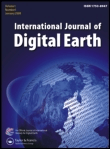
International Journal of Digital Earth
Scope & Guideline
Pioneering digital solutions for Earth’s challenges.
Introduction
Aims and Scopes
- Remote Sensing Technologies:
The journal publishes research on the development and application of remote sensing technologies, including satellite imagery, UAVs, and ground-based sensors, to monitor environmental changes and assess natural resources. - Geospatial Data Analysis:
A core area of focus is the analysis of geospatial data using advanced statistical, machine learning, and deep learning techniques to derive insights into land cover, climate change, urbanization, and other phenomena. - Environmental Monitoring and Management:
Research that contributes to the sustainable management of natural resources and environmental monitoring, particularly in relation to climate change, biodiversity, and urban development, is a key theme. - Digital Twin and Smart Cities:
The journal explores the concept of digital twins and their applications in urban planning and smart city initiatives, emphasizing the integration of real-time data for improved decision-making. - Interdisciplinary Approaches:
Encouraging interdisciplinary research, the journal promotes studies that combine different domains such as ecology, urban studies, health, and social sciences, facilitated by digital earth technologies.
Trending and Emerging
- Machine Learning and AI in Remote Sensing:
The integration of machine learning and artificial intelligence techniques for analyzing remote sensing data is gaining momentum, with numerous studies exploring their effectiveness in improving accuracy and predictive capabilities. - Big Data and Cloud Computing:
Research leveraging big data analytics and cloud computing for geospatial applications is on the rise, reflecting the demand for scalable solutions to manage and process vast amounts of environmental data. - Urban Resilience and Sustainability:
There is an increasing focus on urban resilience and sustainability, particularly in relation to climate change adaptation, with studies addressing urban heat islands, green infrastructure, and smart city technologies. - Health and Environmental Interactions:
Emerging research is exploring the links between environmental factors and public health, particularly in the context of urban environments and the impacts of climate change on health outcomes. - Digital Twins and Virtual Environments:
The concept of digital twins is becoming more prevalent, with studies focusing on creating virtual models of urban environments for simulation, analysis, and decision support in urban planning and management.
Declining or Waning
- Traditional Remote Sensing Techniques:
There is a noticeable decrease in publications focused solely on traditional remote sensing methods without integration of advanced analytics or machine learning, as the field increasingly favors innovative, data-driven approaches. - Static Data Analysis:
Research that relies on static datasets and conventional statistical methods appears to be waning, with a growing preference for dynamic, real-time data processing and analysis. - Local Case Studies:
The journal has seen a reduction in the number of publications centered on localized case studies, possibly due to a trend towards broader, more global analyses that leverage big data and comprehensive datasets. - Theoretical Frameworks without Practical Application:
There is a decline in theoretical contributions that do not directly translate into practical applications or case studies, as the journal increasingly favors impactful research with clear real-world relevance.
Similar Journals

Earth Science Informatics
Advancing Earth Science through Innovative Informatics.Earth Science Informatics, published by SPRINGER HEIDELBERG, serves as a premier platform for disseminating innovative research in the realm of Earth and Planetary Sciences. With an ISSN of 1865-0473 and an E-ISSN of 1865-0481, this journal offers insightful contributions that leverage informatics and data-driven approaches to address complex geoscientific challenges. As a testament to its impact in the field, it ranks in the Q2 quartile and holds an impressive 73rd percentile rank among 195 journals in the broader **Earth and Planetary Sciences** category, as per Scopus rankings. This journal invites researchers, professionals, and students to explore and contribute to the growing body of knowledge that bridges the gap between informatics and Earth science, fostering advancements in both theoretical frameworks and practical applications. Situated in Germany, at TIERGARTENSTRASSE 17, D-69121 HEIDELBERG, it aims to enhance interdisciplinary collaboration and propel scientific discovery from 2009 to 2024 and beyond, reinforcing its vital role in the academic community.
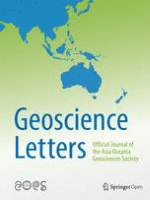
Geoscience Letters
Unlocking the Secrets of Our PlanetGeoscience Letters, published by Springer, is a prominent open-access journal in the field of Earth and Planetary Sciences, recognized for its dedication to advancing knowledge and research in this vital area of study. With a reported impact factor that reflects its esteemed position—ranking in the Q1 quartile of Earth and Planetary Sciences, particularly as the journal ranks #48 out of 195 in the general category according to Scopus—the journal serves as a vital resource for researchers, professionals, and students. Since its inception in 2014, Geoscience Letters has facilitated the dissemination of high-quality research and critical insights, aiming to bridge the gap between scientific discovery and societal needs. Its commitment to open access ensures that the latest findings are readily available to a global audience, thus enhancing collaboration and innovation within the geosciences community.

Revue Internationale de Geomatique
Transforming Spatial Data into Actionable KnowledgeRevue Internationale de Geomatique (ISSN: 1260-5875, E-ISSN: 2116-7060) is a prestigious journal published by TECH SCIENCE PRESS, dedicated to advancing the field of geomatics. This journal serves as a vital platform for disseminating significant research findings, cutting-edge methodologies, and innovative applications within the realm of spatial data and technology. With an emphasis on interdisciplinary studies, it fosters collaboration among researchers, professionals, and students across various domains, including environmental science, urban planning, and geographic information systems (GIS). Although not an open-access journal, Revue Internationale de Geomatique maintains a rigorous peer-review process ensuring the publication of high-quality articles that contribute to the evolving landscape of geomatics. Given its relevance and commitment to scholarly excellence, this journal is a crucial resource for advancing knowledge and practices in the ever-growing field of spatial information science.
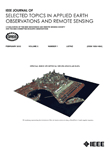
IEEE Journal of Selected Topics in Applied Earth Observations and Remote Sensing
Bridging Knowledge and Technology in Earth Sciences.IEEE Journal of Selected Topics in Applied Earth Observations and Remote Sensing is a premier peer-reviewed journal published by the IEEE-INST ELECTRICAL ELECTRONICS ENGINEERS INC, focused on advancing the field of Earth observation and remote sensing technologies. With an impressive impact factor, this journal ranks in the top quartile (Q1) for both Atmospheric Science and Computers in Earth Sciences, underscoring its significance and influence in the academic community. Open access since 2020, it facilitates broader dissemination of research findings to enhance global visibility and accessibility for researchers, professionals, and students alike. Spanning the years from 2008 to 2024, the journal covers a myriad of topics that highlight innovative applications of remote sensing data and technologies in addressing environmental challenges. With a Scopus ranking placing it in the 91st and 89th percentiles, respectively, in its categories, the journal serves as a vital resource for advancing scholarly discourse and collaboration in Earth sciences.

Journal of Applied Remote Sensing
Fostering Innovation in Environmental Monitoring and ManagementJournal of Applied Remote Sensing, published by SPIE-SOC PHOTO-OPTICAL INSTRUMENTATION ENGINEERS, stands at the forefront of research in the interdisciplinary field of applied remote sensing, focusing on innovative applications and advancements in technology that support our understanding of the Earth's systems. Established in 2007, this journal has quickly gained recognition, currently holding a Q2 ranking in the Earth and Planetary Sciences category, reflecting its influence and quality within the academic community, with a Scopus ranking of #68 out of 195 in General Earth and Planetary Sciences. The journal provides a robust platform for researchers, professionals, and students to disseminate their findings, ensuring open avenues for knowledge exchange in a field that increasingly impacts environmental monitoring, disaster management, and resource management. With its E-ISSN 1931-3195, the Journal of Applied Remote Sensing remains committed to advancing scholarly communication, fostering innovations that respond to real-world challenges, and enhancing remote sensing applications across diverse sectors. The journal operates from its headquarters in Bellingham, WA, USA, and aims to portray cutting-edge research that enriches the academic literature and informs policy and practice.
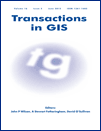
Transactions in GIS
Pioneering the Future of Geographic Research and AnalysisTransactions in GIS is a premier academic journal published by WILEY, dedicated to advancing the field of Geographic Information Science (GIS). With an ISSN of 1361-1682 and an E-ISSN of 1467-9671, this journal has continually contributed valuable insights since its inception in 1996, transforming the landscape of GIS research and application. Covering a broad scope within Earth and Planetary Sciences, it holds a notable Q2 ranking and stands in the 74th percentile among its peers as per Scopus rankings. The journal serves as a critical platform for researchers, professionals, and students who seek to disseminate and engage with innovative GIS methodologies, applications, and theoretical advancements. With a commitment to quality and rigor, Transactions in GIS remains a vital resource for those at the forefront of geographic research and analysis.

Boletim de Ciencias Geodesicas
Connecting Researchers with Groundbreaking Geodetic InsightsBoletim de Ciências Geodésicas is an esteemed academic journal published by the Universidade Federal do Paraná within its Centro Politécnico. Focused on the dynamic field of Earth and Planetary Sciences, this Open Access journal has been a pivotal resource since 1997, fostering the dissemination of critical research and innovative methodologies. With an impact factor indicative of its relevance in the discipline, Boletim de Ciências Geodésicas ranks in the Q3 quartile for Earth and Planetary Sciences as of 2023, showcasing its commitment to quality scholarship in a competitive field. Researchers and students alike will benefit from access to cutting-edge findings, given its broad scope that encompasses various aspects of geodesy and related sciences. The journal's convergence of research from 2005 to 2024 ensures that it remains at the forefront of emerging trends and fundamental developments in the discipline, further enhancing its esteemed reputation in the academic community.
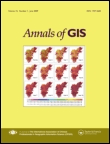
Annals of GIS
Elevating Understanding Through Spatial AnalysisWelcome to the Annals of GIS, a leading academic journal published by Taylor & Francis Ltd, dedicated to advancing the field of Geographic Information Science and its applications. With an ISSN of 1947-5683 and an E-ISSN of 1947-5691, this Open Access journal has been ensuring wide accessibility since 2019, thereby bolstering the dissemination of knowledge in areas such as remote sensing, spatial analysis, and geoinformatics. Hailing from the United Kingdom, the journal ranks impressively within its categories, achieving a Q2 status in Computer Science Applications and a prestigious Q1 ranking in Earth and Planetary Sciences for 2023, placing it in the top 10% among its peers. With a focus on innovative research spanning from 2009 to 2024, the Annals of GIS serves as a vital platform for researchers, professionals, and students alike, providing insights and fostering discussions that push the boundaries of geographic technologies and their real-world applications.
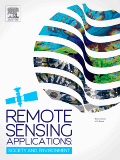
Remote Sensing Applications-Society and Environment
Exploring innovative solutions through the lens of remote sensing.Remote Sensing Applications-Society and Environment, published by Elsevier, stands at the forefront of interdisciplinary research, bridging the fields of remote sensing and environmental science. With an impressive impact factor and recognition within the Q1 quartile in both Computers in Earth Sciences and Geography, Planning and Development, the journal is a vital resource for researchers, professionals, and students committed to advancing our understanding of environmental dynamics through innovative remote sensing technologies. Since its inception in 2015, this journal has cultivated a rich repository of knowledge, addressing pertinent societal and environmental issues, making it a leading source for transformative applications in the field. Accessible and relevant, articles published here not only explore theoretical advancements but also practical implications, ensuring research findings are effectively disseminated to stimulate further inquiries and applications in sustainability and ecological stewardship. The journal's strong Scopus rankings, particularly within its categories, solidify its role as an essential platform for scholarly exchange.

Big Earth Data
Empowering Research with Transformative Earth Data SolutionsBig Earth Data is a prestigious open-access journal that has been at the forefront of advancing research in the intersection of earth science and computer technology since its inception in 2017. Published by TAYLOR & FRANCIS LTD in the United Kingdom, this journal is dedicated to disseminating groundbreaking findings and innovative methodologies in the fields of Earth and Planetary Sciences and Computer Science Applications. With a commendable impact factor and an impressive positioning in the Scopus rankings—claiming Q1 status in Computers in Earth Sciences and Q2 in Computer Science Applications—it serves as a vital resource for researchers, professionals, and students alike. The journal encourages submissions that explore the integration of big data technologies in managing, analyzing, and visualizing earth-related data, thereby fostering interdisciplinary collaboration. Since embracing its open-access model, Big Earth Data has enhanced the accessibility of high-quality research, promoting a broader dialogue in the scientific community and contributing to informed decision-making in global environmental challenges.